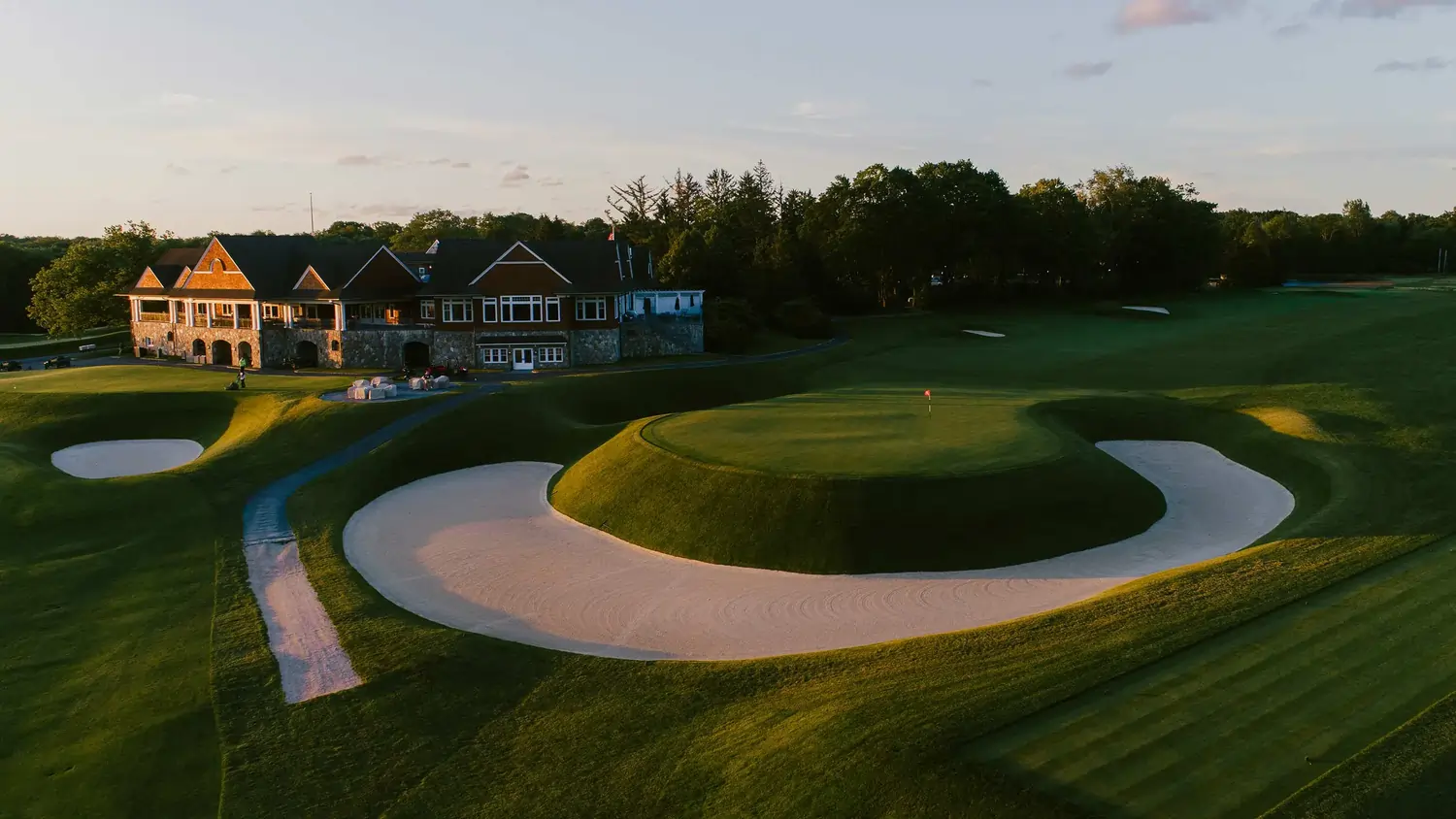Charles Banks
A Yale graduate who completed a number of Seth Raynor's designs — such as Fishers Island, Yale, and Camargo — after Raynor unexpectedly passed away. "Steam Shovel Banks" went on to design nearly 30 courses with his own spin on the "MacRaynor" style.

Charles Banks’s short yet productive career in golf occurred at the height of the American Golden Age of golf architecture in the 1920s. After graduating from Yale University in the early 1900s, Banks began work as a teacher and fundraiser at Hotchkiss, a private secondary school in Connecticut. During his time at Hotchkiss, Banks developed a relationship with Seth Raynor, who had been hired to renovate the school’s nine-hole course. Banks became so captivated by the golf course design process that he left Hotchkiss in 1925 to join Raynor’s firm.
Despite his relative lack of experience, Banks promptly got to work as Raynor’s associate. Before the duo could embark on any real architectural endeavors, however, Raynor passed away from pneumonia in early 1926. Subsequently, Banks supervised the completion of several of Raynor’s projects, including Waialae (1927), Lookout Mountain Club (1926), and Essex County Country Club (1928). He also likely contributed to the completion of Raynor’s design projects at Fishers Island Club (1926), Blue Mound Golf and Country Club (1926), and Mid-Pacific Country Club (1926).
In addition to executing Raynor’s design plans, Banks took on solo projects. Much of his best-known work came in the Northeast, at Tamarack (1929), Cavalier Golf and Yacht Club (1928), and Whippoorwill (1928). In total, Banks designed or renovated more than 30 courses on his own, building a diverse and still-underrated portfolio.
After just five years of solo work, Banks’s career was cut short by a heart attack. He passed away suddenly at the age of 48, much like his mentor Seth Raynor. Although his life has not been extensively researched, Banks left behind several pieces of writing that share a glimpse into a unique career in the history of golf course architecture.
Essex County Country Club
With one of the best-regarded back nines in New Jersey, Essex County Country Club offers a unique mixture of influences from A.W. Tillinghast, Seth Raynor, and Charles Banks
Essex County Country Club


Leave a comment or start a discussion
Engage in our content with thousands of other Fried Egg Golf Members
Engage in our content with thousands of other Fried Egg Golf Members
Get full access to exclusive benefits from Fried Egg Golf
- Member-only content
- Community discussions forums
- Member-only experiences and early access to events















Leave a comment or start a discussion
Lorem ipsum dolor sit amet, consectetur adipiscing elit. Suspendisse varius enim in eros elementum tristique. Duis cursus, mi quis viverra ornare, eros dolor interdum nulla, ut commodo diam libero vitae erat. Aenean faucibus nibh et justo cursus id rutrum lorem imperdiet. Nunc ut sem vitae risus tristique posuere. uis cursus, mi quis viverra ornare, eros dolor interdum nulla, ut commodo diam libero vitae erat. Aenean faucibus nibh et justo cursus id rutrum lorem imperdiet. Nunc ut sem vitae risus tristique posuere.